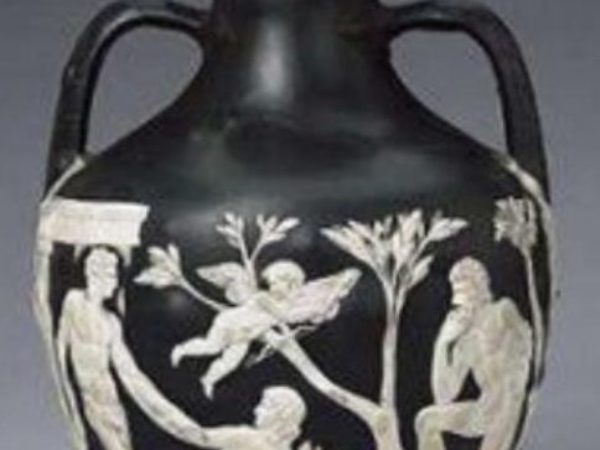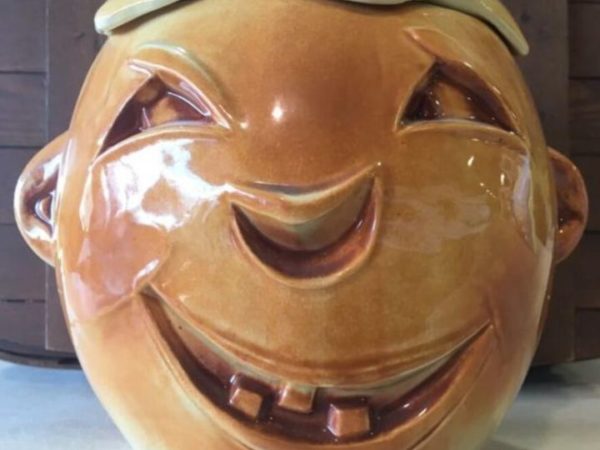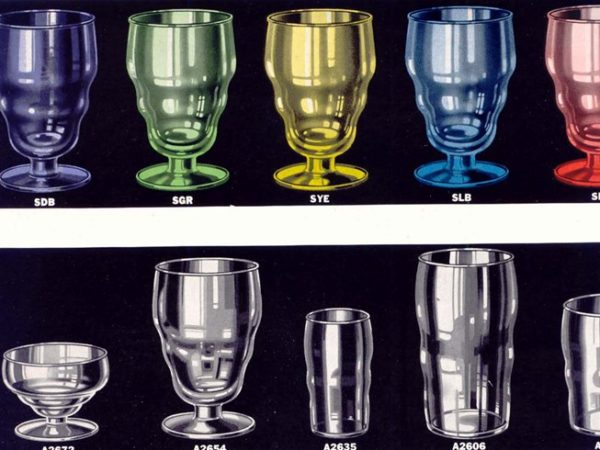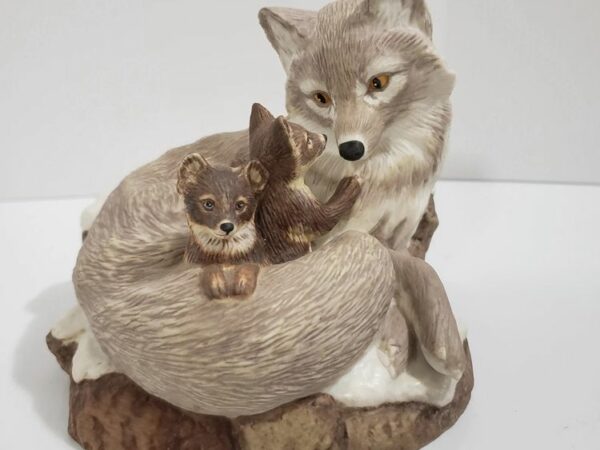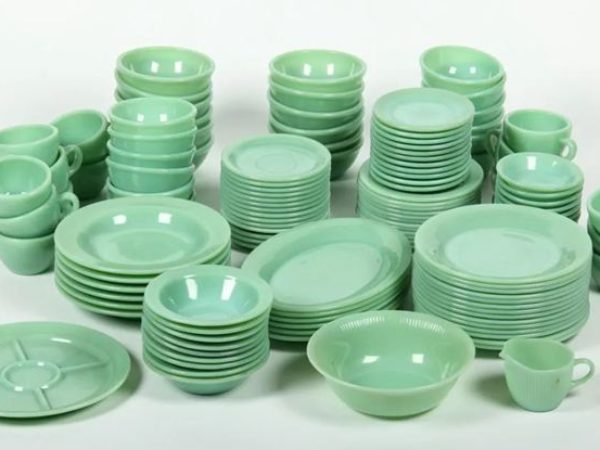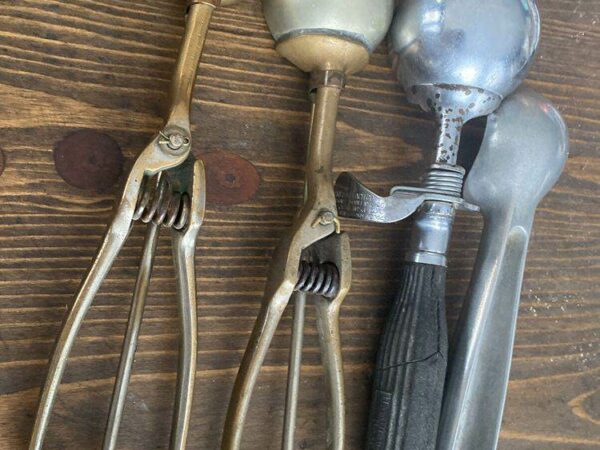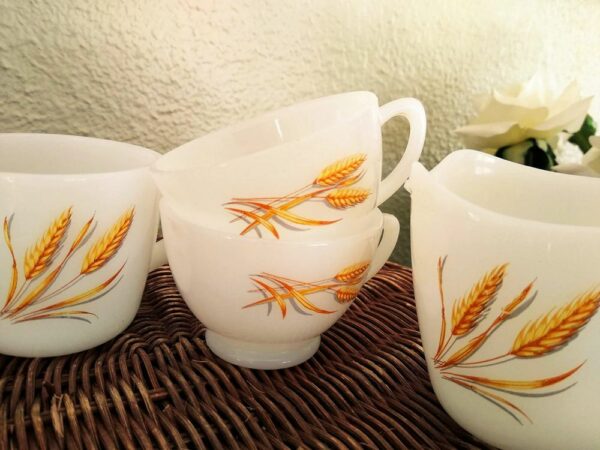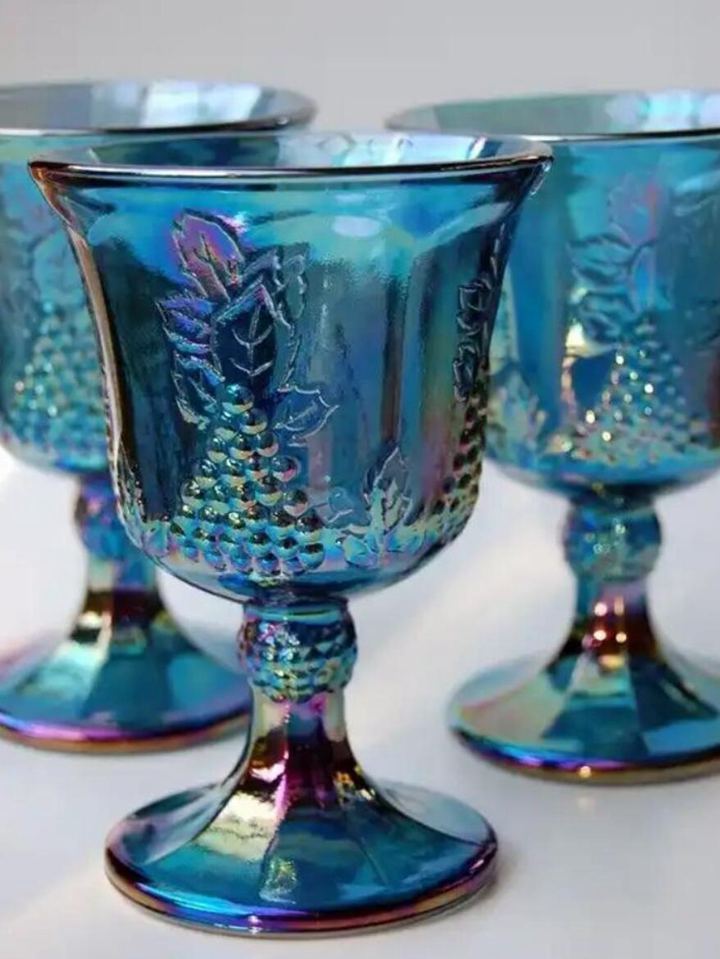
Are you aware of the rarity of carnival glasses?
Maybe you’ve collected a few without realizing it.
This is one of the most eye-catching antiques and is extremely valuable. Due to its rarity, it is very popular among collectors of antiques.
Carnival glasses are a sought-after commodity. Some pieces are worth very little, while others, particularly rare pieces, fetch hundreds of dollars.
Table of Contents
The history of carnival glass
Beginning in 1908, Fenton Art Glass, marketed Carnival glass under the name “Iridill”. The glass was made, but there was little interest in it among the general public.
It is thought to have become so unpopular in 1907 that it was cheaply sold and given away as prizes at fairs. A piece will be given to you as a prize if you win a game at a carnival. It was still presented as a reward until 1925, which was how it gained the term “carnival glass”.
As time passed, this glass became fashionable, and people began to invest in it.
Production began in smaller amounts in the year 2000, with numerous companies producing their versions.
The striking quality of a carnival glass
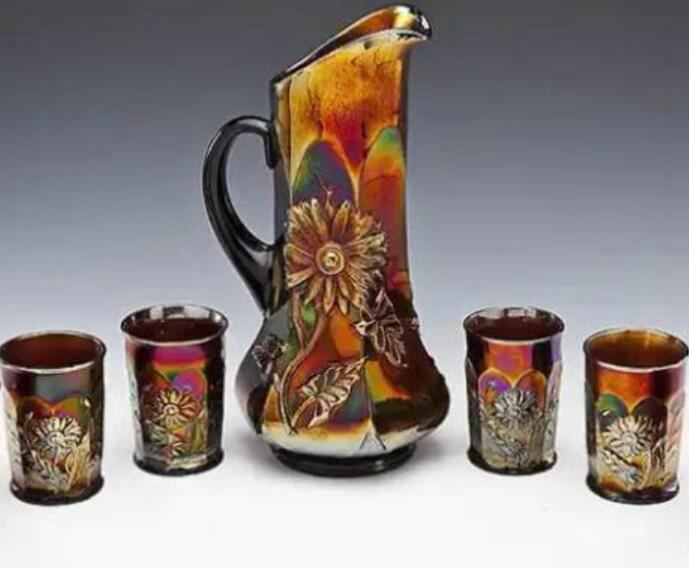
Carnival glass appears to be multicolored.
Even though it is machine-molded, it still requires extensive hand-finishing and decorating. The finished product lacks the somewhat flat appearance common in pressed glass.
Do you know what causes the glass’s iridescent rainbow color? Because minerals or metallic salts are added during the manufacturing process. This produces the shimmery effect that is always seen when holding it up to the light.
It’s tough to tell the real from the fake because this glass comes in a variety of colors, patterns, forms, and sizes.
Carnival glass was used to make an extraordinary array of products, many of which were meant for everyday use rather than decoration, and the number of items that have since survived is astounding.
Most people seek the advice of experts and certified individuals to determine whether a carnival glass is antique or not.
Four easy ways to identify antique carnival glass

Carnival glasses were available in a variety of tints and colors. Some of the pieces were one-of-a-kind due to their color combinations.
Take note of the color, design shape, and pattern when attempting to identify the ancient glass.
Depending on the age, condition, and uniqueness of the pattern, antique carnival glass sells for a variety of prices.
This glass has several distinguishing characteristics, but the finishing on the base surface sets it apart from others. Its appealing feature is enhanced by the brilliant color and exquisite sheen.
To be classified as a carnival glass, every piece must have this glistening finish, regardless of shape or color. Aside from the apparent physical characteristics, color, pattern, form, and the manufacturer’s logo, which is usually found at the bottom, are all important factors in identifying carnival glass.
Here are four simple methods to tell if a piece is an antique carnival glass.
- Examining the color of the glass and noting its physical characteristics
- By exposing it to the light to see how shimmery it is
- Identifying the maker’s mark
- Examining the pattern, sizing, and style
1. Examining the color of the glass and noting its physical characteristics
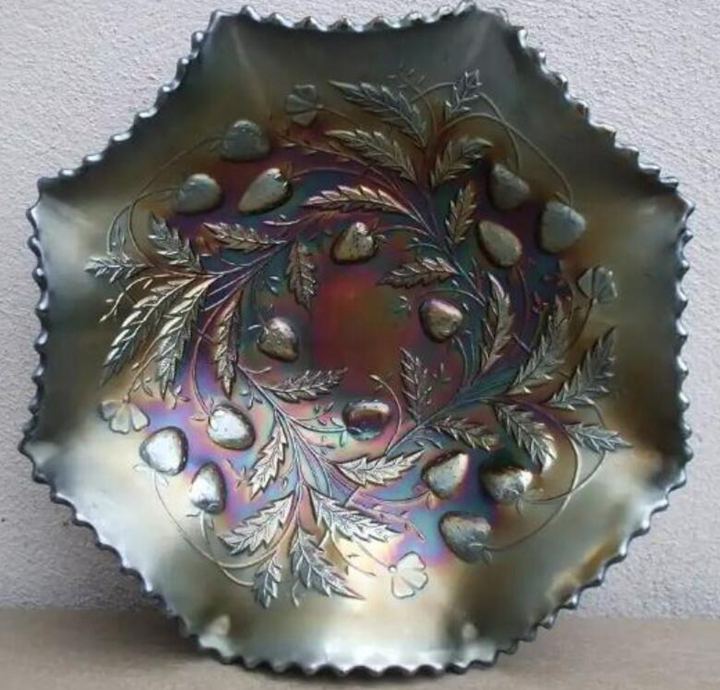
This is usually simple enough.
The quality of a carnival glass’s sheen can easily be used to estimate its value.
Take the glass and hold it up to the light to check for “rust”. Due to the metallic elements in objects, we all know that things rust over time.
Many antique carnival glasses are identified if they have any kind of oxidation.
The rusty appearance will help you determine the age of the glass.
Carnival glass is evenly distributed because it was molded and pressed rather than blown like regular glasses.
The base of antique carnival glasses is known to be thin based on physical characteristics.
So any piece that feels too thick and heavy is not as old as you think.
Take note of the glass’s purpose.
Is it a cup? A bowl? A plate or a vase.
When these glasses were made, it was difficult to determine the sole purpose of each piece.
They were either storage or decorative devices, but the big three plates are still bowls, vases, and plates.
Always check the depth and width for its intended purpose.
Greystone Publishing Carnival Glass Guide offers several photos of different objects, so you may use it to figure out what each piece is for.
2. By exposing it to the light to see how shimmery it is
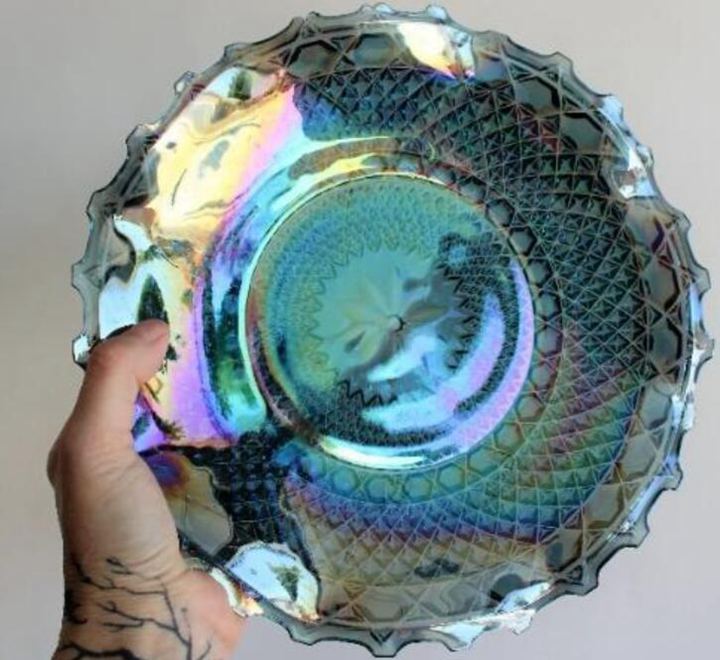
You heard about carnival glass being made with metallic salts to produce the iridescent rainbow color from the beginning, right? This property, on the other hand, will assist you in identifying an antique carnival glass.
The colors you see are the same as what you’d get if you spilled oil into the water. Exactly! That glistening effect.
Many decorative art specialists employ this method to analyze vintage glass.
The carnival glass is a reflective and beautiful object, however, the base color of each piece varies in sheen and comes in over sixty colors.
Identifying the color to check if it has a traditional carnival color is a simple technique to apply.
The piece’s base is made of a popular color called “Marigold”.
Marigold is the most widely recognized carnival hue, with a clear glass base.
It is the most commonly encountered color and, as a result, attracts lower collector prices.
Other colors to keep an eye out for during identification are:
- Amethyst
- Green
- Blue
- Purple Red
- Red
- Amber
- Peach Opal
Shade and depth of color combinations are used to further define these basic colors.
Holding the glass up in a dark place will tone it down and make it appear more ordinary.
Hold it up in a strong light to make the iridescent rainbow color more evident.
3. Identifying the maker’s mark
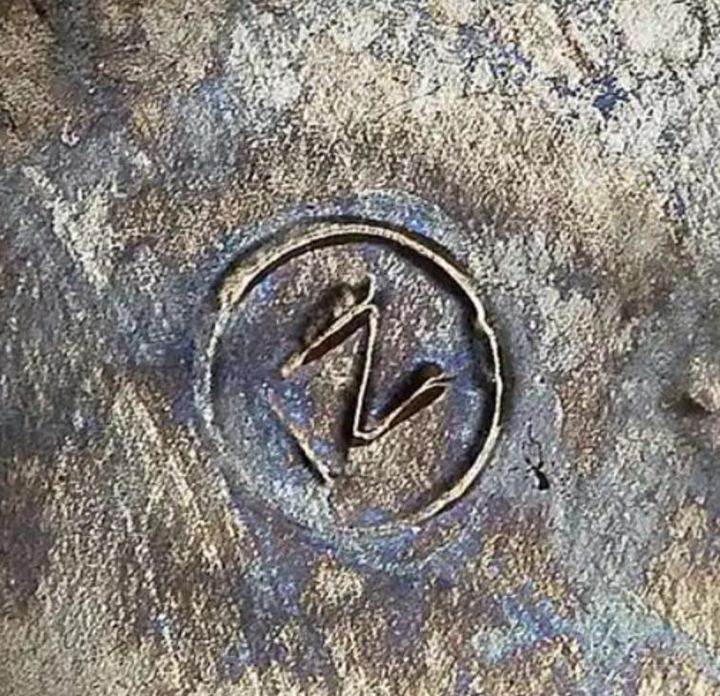
By looking for the manufacturer’s mark on the bottom of the piece, you may tell if it’s an antique carnival glass.
Because of their role at the time, carnival glasses were given the name “Dope glass” after they were used as rewards from 1907 to 1925.
However, when the fashion industry expanded in popularity, it was eventually sold in retail stores, prompting manufacturers to brand their products for easier identification.
Carnival glass was made in large quantities in the United States by companies such as Fenton, Northwood, Imperial, Millersburg, Westmoreland (which started making it in 1908), Dugan/Diamond, Cambridge, and U.S. Glass, as well as much smaller companies.
Because of the severe competition, new designs were developed regularly, and each company ended up producing a large range of various patterns.
The antique carnival glasses made by Northwood, on the other hand, are identifiable since they usually have an uppercase ‘N’ within a circle or semicircle with the letter ‘N’ underlined.
Northwood manufactures a wide range of carnival glasses, but they are best recognized for their unique colors, such as green, amethyst, and cobalt blue.
Imperial Glass was known for its cross-shaped logo. Their work was particularly recognized for its geometric design approach and use of distinctive base colors.
Though some carnival glass had markings, not all of them were consistent. The lack of a manufacturer’s mark on the ancient glasses makes it difficult to identify them. However, once you’ve found a maker’s mark, consult a reference book for examples of the many types of glassware used in the early twentieth century.
When you look up pieces by the same maker that have the same color, shape, and pattern, you could locate the year or even the day they were made.
So look up a list of maker’s marks in a book or online at: Carnivalheaven.com
4. Examining the pattern, sizing, and style

There are almost two thousand different patterns of carnival glass, and no two are alike.
You’ll notice small variances between two plates or vases of the same design, shape, color, and size from the same manufacturer if you put them side by side.
The ancient ones are easy to spot due to the pattern’s originality.
When you match the patterns and colors, you’ll see that they have an uneven glass design that’s quite decorative on both the inside and outside of the glass.
The final fashioning and shape of each item are done by hand, even though this glass is created and pressed by machine.
The crimped edges on a bowl are created by the uneven sizing and design, giving it a handmade appearance.
During the glass manufacturing process, weld molding allowed for a lot of variety.
The edges follow four primary profiles, as seen in the diagram above:
- Ribbon Candy
- Pie Crust
- Ruffled
- Scallop
Unlike the edges, the glass’s base was more diverse.
The bases were more finished, with ringed or domed feet.
These various designs help in determining the piece’s rarity as well as its maker.
Carnival glasses are incredibly symmetrical, especially when it comes to the pattern because they are not blown glass.
Many common patterns modeled after nature can be found on antique carnival glasses.
On various pieces, you’ll see birds, insects, flowers, and fruits.
This makes determining the age of a carnival glass simple.
Iridescence captures the light as the object is spun, emphasizing the facets. Geometric designs or abstract patterns are also present.
To reach a wider audience, each glassmaker created a variety of patterns, many of which were culturally significant. Some of the more unusual and scarce designs are in high demand.
To increase the exclusivity of their designs, manufacturers would fold, flare, and crimp the edges, as well as create asymmetrical designs.
Because different designs and patterns were grouped over time, it is also possible to date a piece of carnival glass based on the pattern.
For easy identification, you can review the patterns and colors of different antique carnival glasses at the Carnival Glass Website by David Doty.
YOU CAN’T IDENTIFY IT YOURSELF?

These are some of the ways to tell if a piece of glass is truly antique.
But if you feel you can’t do it on your own, or if the features are too difficult to identify, you can hire someone to assist you.
A local antique dealer who is an expert is a fantastic idea! Antique dealers have more experience, so identifying a piece will be much easier for them.
If you don’t have one nearby, you can look for assistance online. Any piece of carnival glass can be identified online by sending a picture of it.
The following forums will gladly assist you:
You will be able to meet professionals who will be able to answer your queries and maybe appraise your carnival glass as a result of this.
You will be given precise information about thousands of antiques.
You will have access to a database that will allow you to look up a specific color or pattern.
It’s not easy to tell how ancient a carnival glass is, especially if you like the way it looks and want it to be a part of the collection. It’s helpful to have a reference on hand that can explain the firing and manufacturing process in the early twentieth century.
A single piece of carnival glass on exhibit is lovely; a collection, especially if lit by spotlights or hung in a north-facing window, is gorgeous.
Antiques are usually collected for their monetary value. People are drawn to gathering more of these glass pieces since some are uncommon.
Antique carnival glasses are important collectibles, so make sure you properly identify them so you get the right one.
You can also sell them for a high price at other events or even carnival glass museums.
It might be difficult to keep track of all the many designs and techniques that go into each piece.
But with careful observation of the color, design, shape, and pattern while checking for its depth and width to know its purpose, the age of any carnival glass can be easily identified!.
